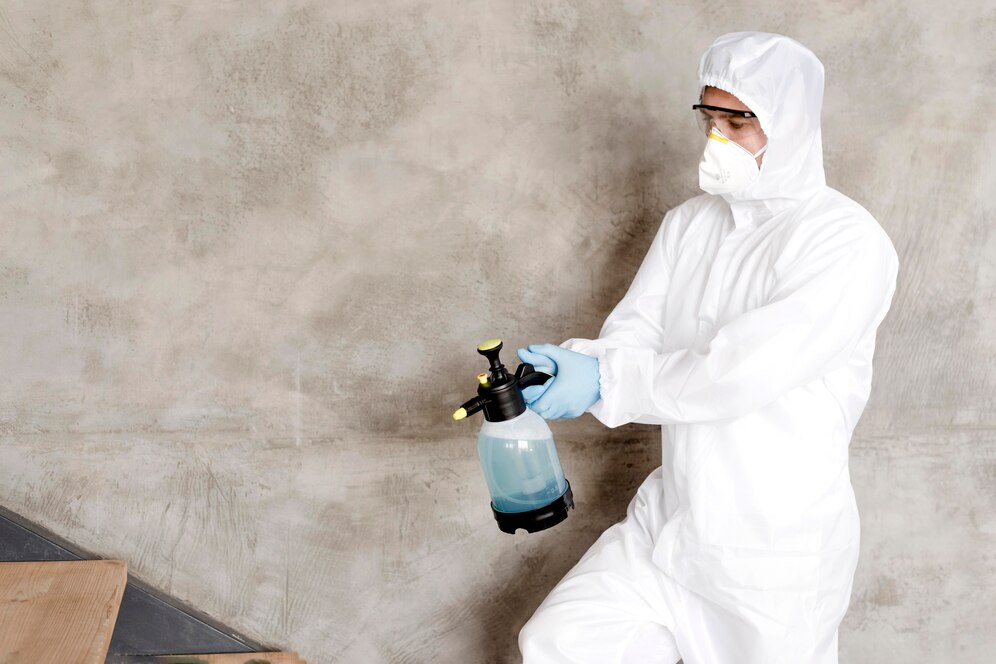Mold toxicity is a serious concern that can lurk within our homes, often unnoticed until it starts affecting our health. Mold spores, invisible to the naked eye, can proliferate in damp, poorly ventilated areas, releasing toxins that pose risks to our well-being. Recognizing the warning signs of mold toxicity is crucial for safeguarding our health and creating a safe living environment. Here are 10 Warning Signs of Mold Toxicity as follow.
Persistent Respiratory Issues
If you or your family members experience frequent coughing, wheezing, or difficulty breathing, it could be a sign of mold-related respiratory irritation. Mold spores in the air can trigger allergic reactions and exacerbate asthma symptoms, especially in individuals with pre-existing respiratory conditions. Prolonged exposure to mold toxins can lead to chronic respiratory problems and increase the risk of respiratory infections.
Visible Mold Growth
The most obvious sign of mold contamination is the presence of visible mold growth on surfaces such as walls, ceilings, or floors. Mold may appear as black, green, or white patches, often accompanied by a musty odor. Ignoring visible mold can lead to further contamination and health risks, as mold colonies can release spores into the air, exacerbating respiratory issues and allergic reactions.
Musty Odor
A persistent musty or earthy odor in certain areas of your home, such as basements, bathrooms, or closets, could indicate hidden mold growth. Even if mold is not visible, the presence of a musty smell suggests elevated moisture levels conducive to mold growth. Addressing the source of moisture and improving ventilation can help prevent mold from spreading and causing health problems.
Water Damage
Any signs of water damage, such as stained walls or ceilings, peeling paint, or warped flooring, may indicate underlying mold issues. Water intrusion from leaks, floods, or high humidity levels creates ideal conditions for mold growth and should be addressed promptly to prevent contamination. Repairing leaks, drying affected areas, and addressing humidity levels can help prevent mold growth and mitigate potential health risks.
Allergic Reactions
Mold allergies can manifest as symptoms such as sneezing, itching, watery eyes, and skin rashes. If you or your family members experience allergic reactions that worsen indoors or in specific areas of your home, mold contamination may be the culprit. Identifying and removing mold sources, as well as implementing measures to improve indoor air quality, can help alleviate allergic symptoms and reduce the risk of mold-related health problems.
Fatigue and Weakness
Prolonged exposure to mold toxins can cause fatigue, weakness, and lethargy, even in otherwise healthy individuals. If you feel unusually tired or rundown without a clear explanation, it’s essential to consider potential environmental factors such as mold contamination. Addressing mold issues, improving ventilation, and maintaining a clean and dry living environment can help reduce the risk of mold-related fatigue and improve overall well-being.
Headaches and Cognitive Issues
Mold toxicity has been linked to headaches, difficulty concentrating, memory loss, and other cognitive impairments. If you experience persistent headaches or notice changes in cognitive function, mold exposure may be a contributing factor. Improving indoor air quality, addressing mold sources, and seeking medical evaluation can help identify and mitigate the effects of mold toxicity on cognitive health.
Unexplained Odor and Taste Changes
Mold toxins can affect your sense of smell and taste, causing unusual odor perceptions or changes in taste preferences. If you notice strange smells or flavors in your home, it’s essential to investigate for potential mold sources. Identifying and removing mold-contaminated materials, improving ventilation, and maintaining proper hygiene can help eliminate unpleasant odors and taste changes associated with mold toxicity.
Skin Irritation and Rashes
Direct contact with mold or its spores can cause skin irritation, redness, itching, or rashes, especially in sensitive individuals.
If you develop skin problems that worsen indoors or after exposure to specific areas of your home, mold contamination may be to blame. It is important to practice good hygiene. Wearing protective clothing is also essential. Additionally, avoiding direct contact with mold-contaminated materials can help prevent skin irritation. This can also reduce the risk of mold-related skin problems.
Worsening Asthma or Allergy Symptoms
For individuals with asthma or allergies, mold exposure can trigger or exacerbate symptoms. This can lead to more frequent attacks. Additionally, it can result in increased reliance on medication. If your respiratory symptoms worsen indoors or coincide with specific environmental conditions, mold may be a contributing factor. Managing asthma and allergy symptoms is important. It helps improve respiratory health. Additionally, reducing exposure to allergens is crucial. Addressing mold sources is also essential. These actions can help improve the quality of life for individuals with mold-related conditions.
conclusion
In conclusion, recognizing the 10 Warning Signs of Mold Toxicity is essential for protecting your health and well-being. If you suspect mold contamination in your home based on these indicators, taking prompt action is crucial. Consulting with a certified mold inspector or remediation specialist is crucial. They can help identify the extent of contamination. Additionally, they can implement effective solutions. These solutions aim to create a mold-free environment for you and your family. Addressing mold issues is important. It helps improve indoor air quality. Ultimately, this creates a safer and healthier living environment for yourself and your loved ones.







